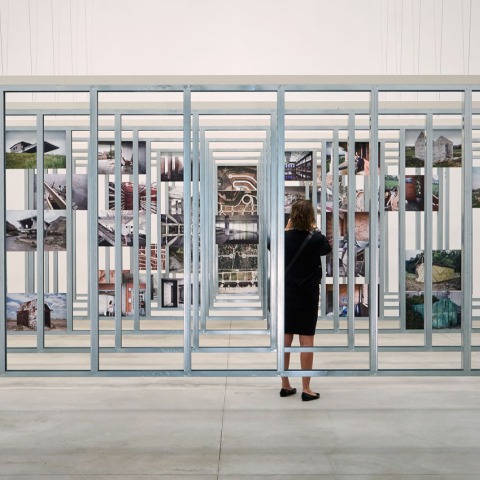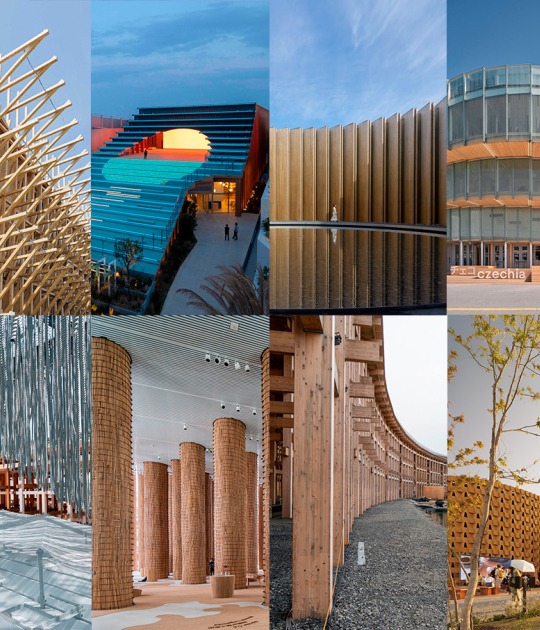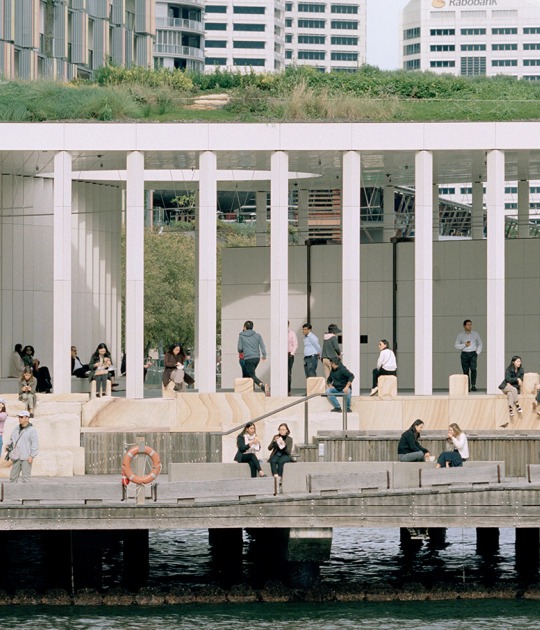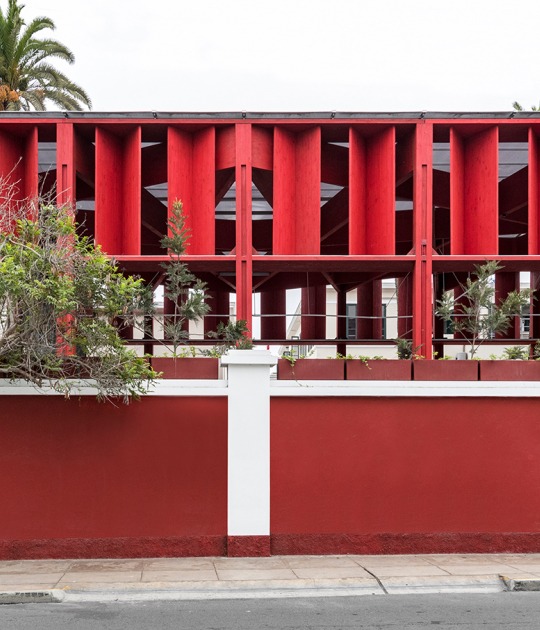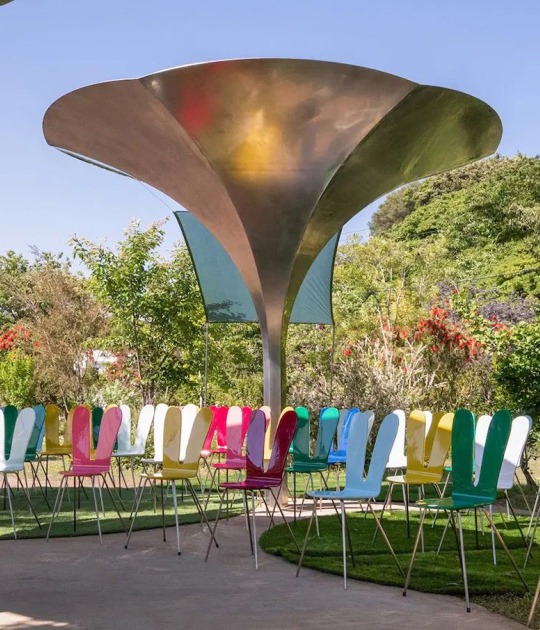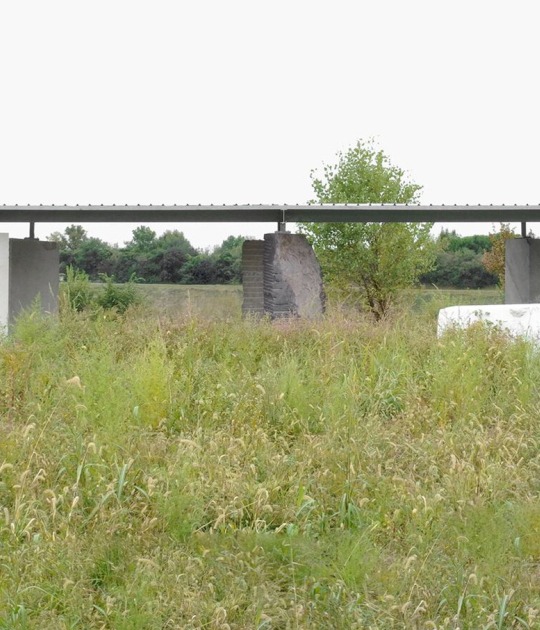"... Where is the life we have lost in living?
Where is the wisdom we have lost in knowledge?
Where is the knowledge we have lost in information? ...
Osten said he "have never read (I've had) as much information as nowadays thanks to the smart phones and never absorbed so little, with the consequent depletion of our memory."
Without stigmatizing smartphones, looking at the contents of the flag of Spain in the Venice Biennale I would say that something commented by Osten and especially Eliot has occurred and can be seen in the results.
When Aravena - argued by the granting of his Priztker but I think interesting in his approach to the Biennale - raised as a general title for the Biennal "reporting from the front", putting emphasis on those other architectures made around the world and away of the star system, something seemed to change in the focus of attention that major events put in determining the priority interests of architecture.
As always a general idea, a statement of intent to which it is suggested that the themes of the various national pavilions join. Something seemed to be reflected when the bicefalia of Commissioners of the Spanish flag - elected in a "no contest" - raised the slogan "Unfinished", but quickly came the confusion about if they were supporting the documentary about the dance schools in Cuba entitled to the same name, “Unfinished Spaces", the documentary-winning "Ufinished. Italy" or if it was a reflection about what is not over.
Doubts began to clarify rapidly once it was seen the list of selected guests and especially the arguments that the commissariat gave about their ideas, "a new vision of how the Spanish architects have thought and reacted with new strategies", the selection, even though there were some incomprehensible elections, was good, but it had a strange discourse, at two speeds.
After hearing the presentations and statements, the value of this exhibition was to make visible (in Venice) realities that according to the curators could be hidden. But hidden from what?, all the selected projects have been published and disseminated, for example some of them even presented for the second time in Venice (mostly Catalan projects, that in previous silences, had to seek other ways of visibility ).
The documentary collection supported by 7 photographic series, is definitely the best of the sample (here you can see them) but has been submitted with the languid euphemism "process interrupted for longer times than normal ...". In any case photographic series have been widespread, they are the result of intense and bright reflections, which means that they emerge from a deep state of social reflection, action that is now again asked to the viewer. A reflection on the consequences of the real state crisis that the curator derives and names as financial crisis.
Is that euphemism, namely that the crisis was financial and not of the real estate, the most repeated in the ideology of the exhibition: therefore it is interpreted that what happened came from the outside or was it a supervening cause, which means that there was no directly responsible in Spain. A theory that although demonstrates the problem and its consequences does not analyze the causes to prevent them from reproducing. A theory that endorses itself by showing the intelligent and optimistic outcome of architects responding to that period with bright proposals. Therefore what is bad is not the content but the reading that is presented as if the crisis was over, as if we had been able to overcome it and the sample was the launch pad to a new stage.
But what are we talking about ?, just a week ago the economy reached one of its most dramatic points. Since 1909 the debt had not exceeded the GDP, plus the European Union watered the optimism of some saying their adjustments and macroeconomic figures were not being met and they were thinking about fining for the first time an European country.
Before continuing it is necessary to say, that the selection, even though is part of the best architecture in Spain although there is much more, it has in many cases a strange reading that suffers from the proximity to the commissariat. There are choices of projects that if we look at the criteria are somehow weird, which is also evident in the final video-interviews which give the word to a collection of professionals who develop their educational or cultural activity around the city of New York, exemplifying the Spanish architectural thinking are nor Spanish, nor European, nor have knowledge of the Spanish real estate crisis ... a "very appropriate" choice given the chosen ideology.
The selected examples -some selected incomprehensibly given the brilliance of the majority- in a large percentage are not really a response to the conditions of the crisis. At least 30 percent (1) were designed and began to be built when the crisis did not exist, so his brilliance responds more to the denied intelligence of the authors rather than to the stylistic selection of Commissioners.
Nothing, not a single brushstroke to understand why all this, what caused this terrible situation, because this virulence in Spain and not in other countries. It is difficult to consider these issues if, as we mentioned at the beginning, the blame lies with the financial crisis, cape that everything covers and also came from outside, which gives no responsible for an architectural crisis whose greater scars had been not taken by the architecture but by the society that has not been able to respond to these conditions, these other financial.
If to this we add the positivism-goodness of the video, "a reflection of the happy world that we expect now that the crisis is over" (?), I think that TS Eliot was quite right and the problem is that it has not been possible to produce wisdom, at least at the pace that architects, with their intelligence, have produced knowledge. The situation is closer to the creation of only information, a stylistic vademecun to inform the world of obtaining wisdom to not stumble again on what caused the crisis that would produce so much pain and fell in Spain with more virulence than in other places.
In any case, and recalling the character of Umberto Eco, Adso, if the series of concomitant causes were not true, which means, the speech has not been true, but the result has shown us a different way of architecture, it has served to show the world another view of Spanish architecture and has deserved to win the Golden Lion at the Biennale, in this case we are left with the positive.
(1) Examples of projects designed before the crisis. The first date corresponds to the beginning of the project.
1996-2001-2003 project.
2009-2010 Cultural Centre Casal Balaguer
1999-2007 ... Fábrica Azucarera de San Isidro
1999-2011 Restoration of the ancient Church of Corbera D'Ebre.
2003-2006 Lidia Cinema
2004-2007 House in Gaüses
2004-2005 ... Barberí Space, Olot
2004-2012 Convent of Santa Maria de los Reyes
2005-2007 ... 3x1 / 3 Municipal Health Centres in Madrid
2005-2008 Palacio Condestable
2005-2010 Atrio
2006-2009 House Collage
2006-2010 Head Designation of Origin Ribera del Duero.
2006-2014 Museum of Fine Arts of Asturias.
2007-2009 80 housing units in Salou
2007-2012 Museum of Santiago and the Pilgrimages
... / ...
